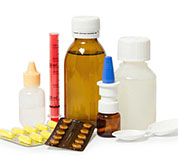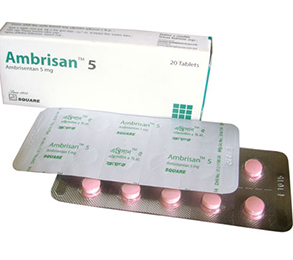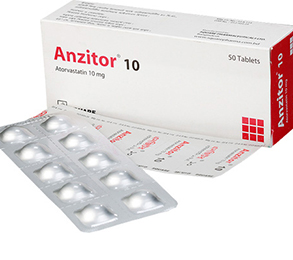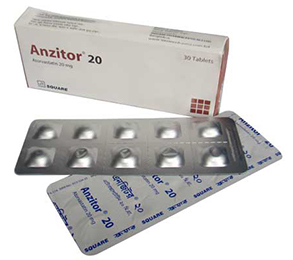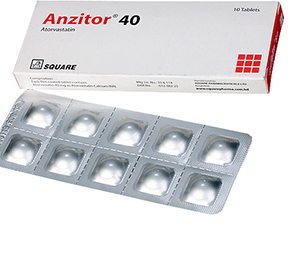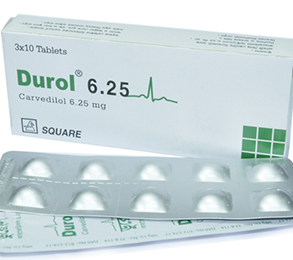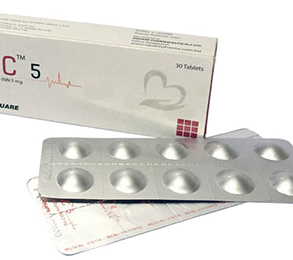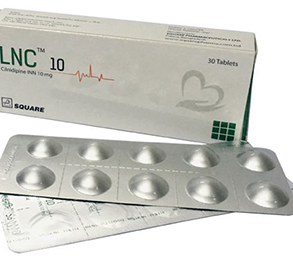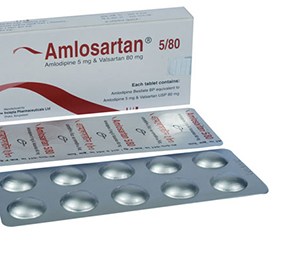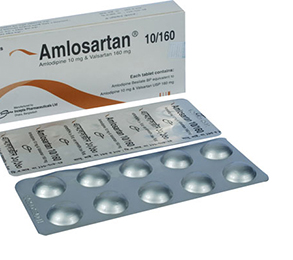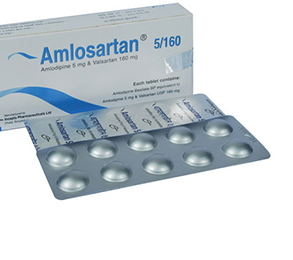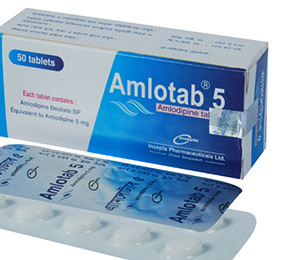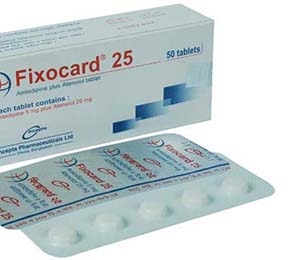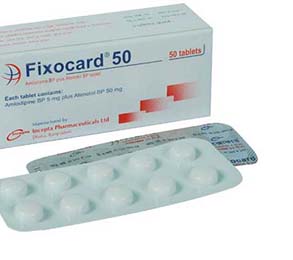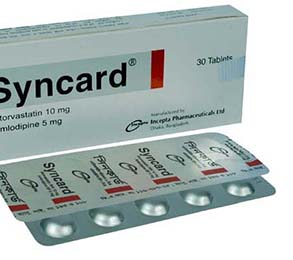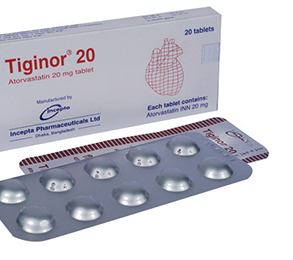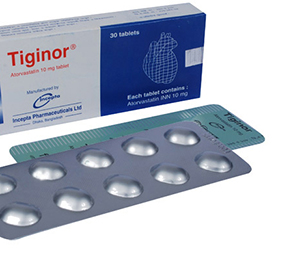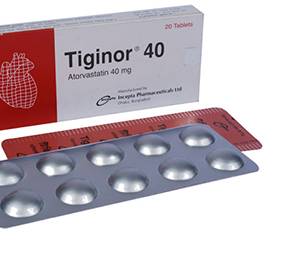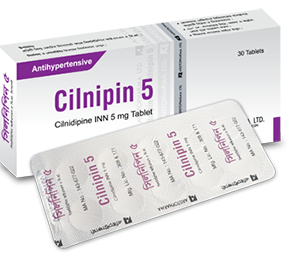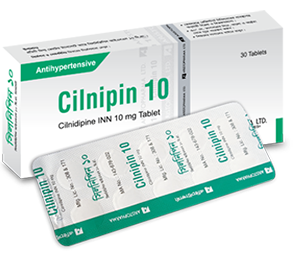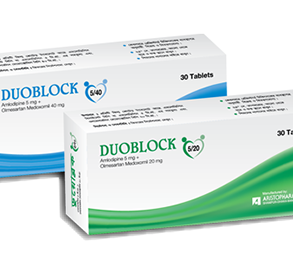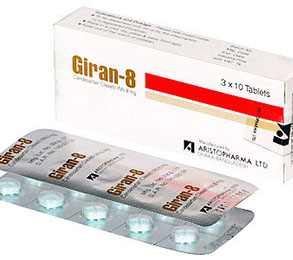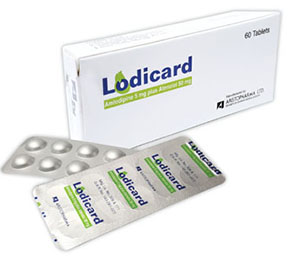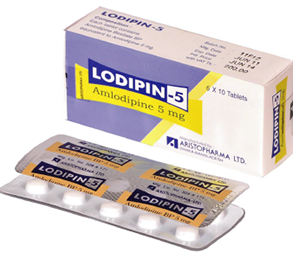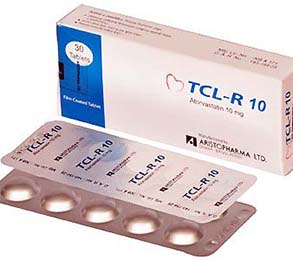Nop Tablet 5 mg 10 Pcs
Alternative products
Lisinopril
Indications
Hypertension: Lisinopril is indicated for the treatment of hypertension in adult patients and pediatric patients 6 years of age and older to lower blood pressure. Lowering blood pressure lowers the risk of fatal and non-fatal cardiovascular events, primarily strokes and myocardial infarctions. These benefits have been seen in controlled trials of antihypertensive drugs from a wide variety of pharmacologic classes.
Control of high blood pressure should be part of comprehensive cardiovascular risk management, including, as appropriate, lipid control, diabetes management, antithrombotic therapy, smoking cessation, exercise, and limited sodium intake. Many patients will require more than 1 drug to achieve blood pressure goals. For specific advice on goals and management, see published guidelines, such as those of the National High Blood Pressure Education Program’s Joint National Committee on Prevention, Detection, Evaluation, and Treatment of High Blood Pressure (JNC).
Numerous antihypertensive drugs, from a variety of pharmacologic classes and with different mechanisms of action, have been shown in randomized controlled trials to reduce cardiovascular morbidity and mortality, and it can be concluded that it is blood pressure reduction, and not some other pharmacologic property of the drugs, that is largely responsible for those benefits. The largest and most consistent cardiovascular outcome benefit has been a reduction in the risk of stroke, but reductions in myocardial infarction and cardiovascular mortality also have been seen regularly.
Elevated systolic or diastolic pressure causes increased cardiovascular risk, and the absolute risk increase per mmHg is greater at higher blood pressures, so that even modest reductions of severe hypertension can provide substantial benefit. Relative risk reduction from blood pressure reduction is similar across populations with varying absolute risk, so the absolute benefit is greater in patients who are at higher risk independent of their hypertension (for example, patients with diabetes or hyperlipidemia), and such patients would be expected to benefit from more aggressive treatment to a lower blood pressure goal.
Some antihypertensive drugs have smaller blood pressure effects (as monotherapy) in black patients, and many antihypertensive drugs have additional approved indications and effects (e.g., on angina, heart failure, or diabetic kidney disease). These considerations may guide selection of therapy.
Lisinopril may be administered alone or with other antihypertensive agents.
Heart Failure: Lisinopril is indicated to reduce signs and symptoms of heart failure in patients who are not responding adequately to diuretics and digitalis.
Acute Myocardial Infarction: Lisinopril is indicated for the reduction of mortality in treatment of hemodynamically stable patients within 24 hours of acute myocardial infarction. Patients should receive, as appropriate, the standard recommended treatments such as thrombolytics, aspirin and beta-blockers
Pharmacology
Lisinopril competitively inhibits ACE from converting angiotensin I to angiotensin II (a potent vasoconstrictor) resulting in increased plasma renin activity and reduced aldosterone (a hormone that causes water and Na retention) secretion. This promotes vasodilation and BP reduction.
Dosage
Oral (Adult)-
Hypertension: Initially, 10 mg/day, 1st dose given preferably at bedtime to avoid precipitous fall in BP. Patient with renovascular HTN, volume depletion, severe HTN: Initially, 2.5-5 mg once daily. Patient on diuretic: Initially, 5 mg once daily. Maintenance: 20 mg once daily, up to 80 mg/day may be given if needed.
Diabetic nephropathy: Hypertensive type 2 diabetics with microalbuminuria: 10 mg once daily, may increase to 20 mg once daily to achieve a sitting diastolic BP
Heart failure: As adjunct: Initially, 2.5 or 5 mg/day, increased by increments of ≤10 mg at intervals of at least 2 wk to max maintenance dose of 40 mg/day.
Post-myocardial infarction: Initially, 5 mg once daily for 2 days started within 24 hr of the onset of symptoms. Increase to 10 mg once daily. Patients with low systolic BP: Initially, 2.5 mg once daily.
Oral (Child)-
Hypertension: ≥6 yr Initially, 0.07 mg/kg, up to 5 mg once daily.
* চিকিৎসকের পরামর্শ মোতাবেক ঔষধ সেবন করুন'
Administration
May be taken with or without food.
* চিকিৎসকের পরামর্শ মোতাবেক ঔষধ সেবন করুন'
Interaction
May enhance hypotensive effect with diuretics. May increase risk of renal function deterioration and decrease antihypertensive effect with NSAIDs. May increase serum levels and toxicity of lithium. Increased risk of hyperkalaemia with K-sparing diuretics and K supplements. May increase nitritoid reactions of gold Na thiomalate.
Contraindications
History of angioedema related to previous ACE inhibitor treatment, hereditary or idiopathic angioedema. Concomitant use with aliskiren in patients with diabetes or renal impairment. Pregnancy. Children with GFR <30 mL/min/1.73 m2.
Side Effects
Headache, fatigue, persistent and non-productive cough, chest and abdominal pain, dizziness, nausea, vomiting, diarrhoea, upper resp tract infection, asthenia, rash, orthostatic effects, hypotension, renal dysfunction, hyperkalaemia, intestinal angioedema; increased BUN and serum creatinine levels.
Pregnancy & Lactation
Category D: There is positive evidence of human foetal risk, but the benefits from use in pregnant women may be acceptable despite the risk (e.g., if the drug is needed in a life-threatening situation or for a serious disease for which safer drugs cannot be used or are ineffective).
Precautions & Warnings
Bilateral renal artery stenosis or a single kidney with unilateral renal artery stenosis. Patients with collagen vascular disease, acute MI at risk of further haemodynamic deterioration, angioedema unrelated to ACE inhibitor therapy, aortic stenosis and hypertrophic cardiomyopathy. Increased risk of angioedema in black patients. Renal impairment. Lactation. Childn <6 yr.
Use in Special Populations
Adult:
- CrCl 10-30 ml/min: Initially, 2.5-5 mg once daily.
- CrCl 31-80 ml/min: Initially 5-10 mg once daily. Dose can be adjusted up to max 40 mg once daily based on patient's response.
Child: Do not give if GFR <30 mL/min/1.73 m2.
Overdose Effects
Symptoms: Hypotension, tachycardia, circulatory shock, palpitations, bradycardia, hyperventilation, renal failure, electrolyte disturbances, anxiety, dizziness and cough.
Management: Normal saline IV infusion may be used. Perform haemodialysis, emesis, gastric lavage, admin of absorbents and Na sulfate if recently taken. Consider admin of angiotensin II infusion and/or IV catecholamines if available.
Therapeutic Class
Angiotensin-converting enzyme (ACE) inhibitors
Storage Conditions
Store at below 25° C.
- Type Tablet
- Tag
- Morbi leo risus
- Porta ac consectetur ac
- Vestibulum at eros


